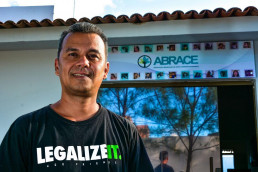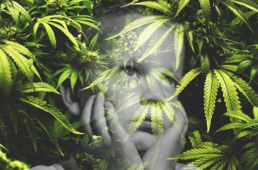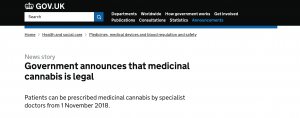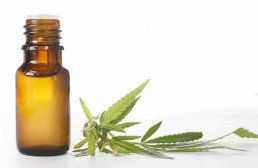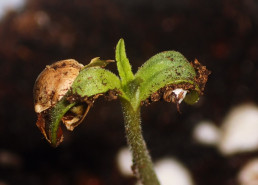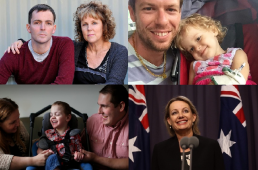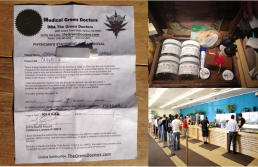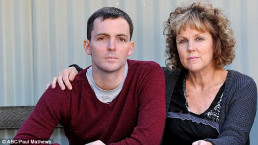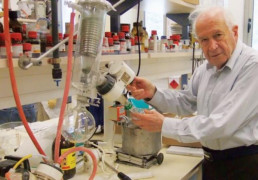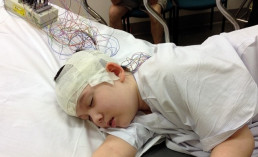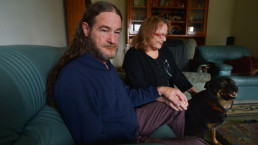Exclusive: Meet the Brazilian who legally provides 1000s of children with medical cannabis
Exclusive: Meet the Brazilian who legally provides 1000s of children with medical cannabis
The ABRACE Foundation (Associação Brasileira de Apoio Cannabis Esperança) in Brazil supplies over 1000 patients with medical cannabis every day. In 2016, the foundation was given legal permission to continue producing, extracting and providing medical cannabis.
This “medical cannabis” is not GMP certified and has not been produced by GW, Tilray or any of the other global licensed producers who are currently looking to license their CDMP’s in the UK.
ABRACE grows cannabis organically outdoors, extracting into a whole plant medicine using lipid fat, providing it to patients who need it most.
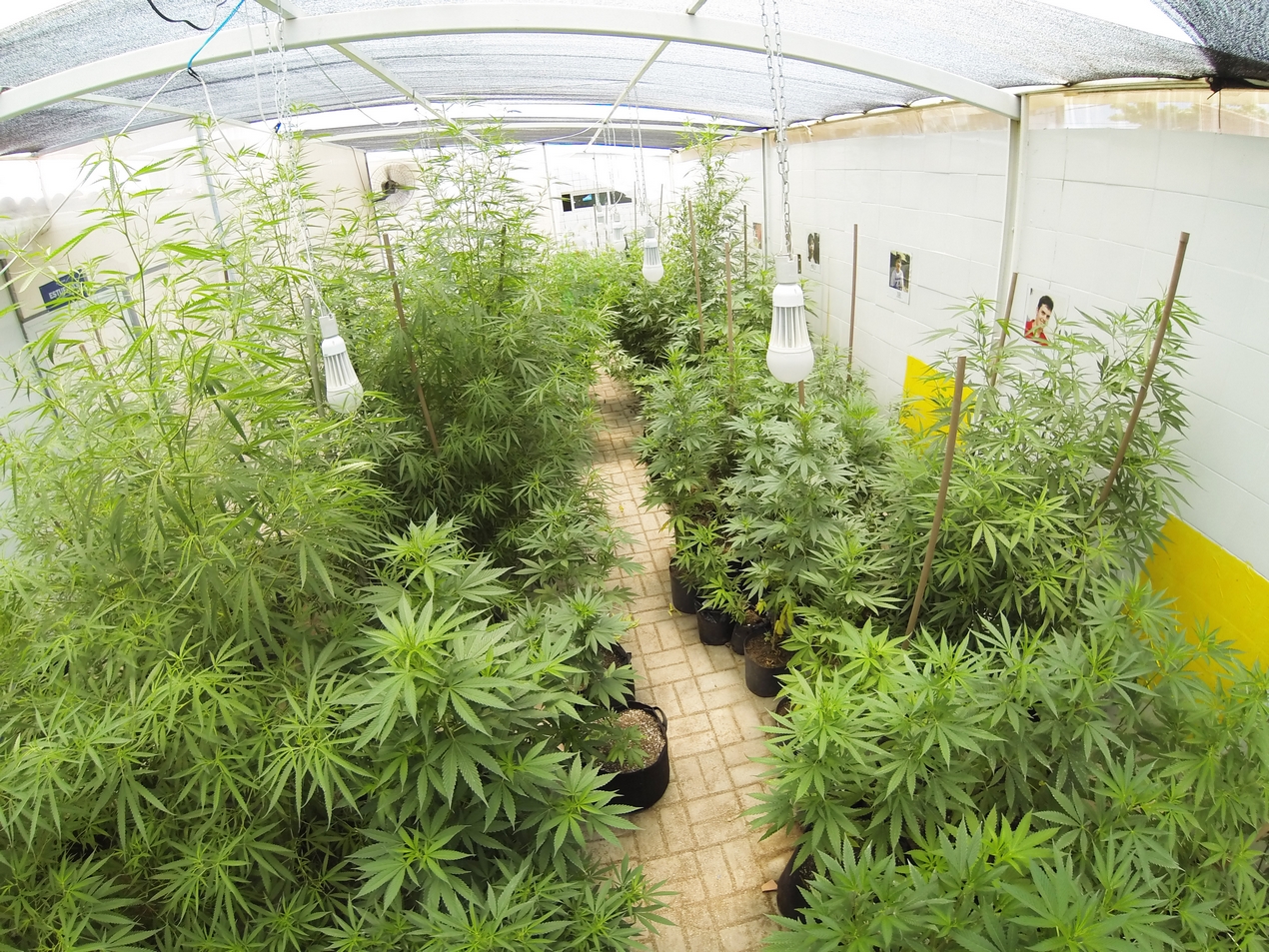
Many of these are children suffering from drug-resistant epilepsy, autism, and ailments that are not easily treated with conventional medicines. Many of these children symptoms, such as daily seizures have been reduced considerably and all have reported an improved quality of life.
These whole plant tinctures offer ratios of 20:1 and 2:1, using seeds provided by ‘Medical Marijuana Genetics’, ABRACE have been able to provide consistent medicines that have not only been effective, but have been made by simply growing a suitable plant then cooking its dried flowers in a fat for 6 hours before sieving.
We meet with ABRACE founder, Cassiano, to find out how he went from treating a few patients illegally, to gaining the first legal permission in Brazil to provide medical cannabis for 1,000s of people.
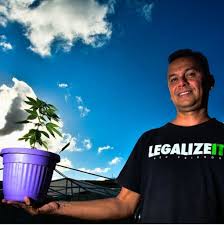
As with most medical cannabis activists, Cassiano’s first experience of cannabis was recreational:
“I was 23 years old at Pipa´s Beach, Brazil, when a close friend who passed me a joint.”
“I moved to the USA, and bought my first seed from Marc Emery and I managed to harvest my first crop while over there.
“When Lula [Luiz Inácio Lula da Silva] became President, I decide to come back to Brazil and help my country to rebuild.”
Inspired by legendary cannabis activist Rick Simpson and family tragedy, Cassiano told us how he was driven to help those patients left behind by Brazil’s government:
“I properly started my medical cannabis activism in 2013. I guess we all started with Rick Simpson and cancer in 2013.
“I lost my aunt Marta to cancer in 2013. I always suspect that medicines are the real cancer. They kill you faster due to the effects on body and mind!
“I could not help her at that time and it still bothers me to know the cure, but unfortunately, my hands were tied.
“After my Aunt passed away, my mother became ill and with doctors suspecting she has lung cancer! That’s when I decide to try my first oil made in the kitchen stove.”

Amazingly, Cassiano’s homemade oil was able to save his mother.
“My mother recover in 24 hours,” he told us, detailing how cannabis improved his mother’s condition; “She recovered her appetite, energy, and happiness.
“After being bedridden for 5 days, just one hour after I gave her the oil she woke up, got out of bed and began cleaning dishes and Facebooking!
[/fusion_text][fusion_text]
Seeing the incredible results his mother had with medical cannabis, Cassiano’s future as a medical cannabis activist was sealed.
“After I helped my mother I could not stop!
“In 2014 I came across Charlotte’s Web on TV, the case of a little girl who had frequent epileptic seizures, with her mother trying a CBD-rich cannabis oil CBD rich. This was the first time I heard about CBD.”
Charlotte Figi, the inspiration behind Charlotte’s Web, has helped propel CBD into the mainstream; highlighting how different conditions require different ratios of cannabinoids.
“I started to import CW oil but no one wanted to send to Brazil back then.
“After browsing Google, we found HempMeds who ship hemp oil worldwide as it can pass unnoticed by the law as regular stalk and seed hemp oil.
It wasn’t smooth sailing for Cassiano and the families he was trying to help in the early days.
“One mother had her order stoped by ANVISA, a Brazilian agency for medicine control,” Cassiano explained.
Making the most out of the set-back, Cassiano and other activists used the situation to raise national awareness of medical cannabis and the patients desperate for access. “We ended up on TV. We made so much noise!,” Cassiano added.

“One mother from Brasilia filed a case against the State and she won!
“Now, she was legally allowed to import. ANVISA went ahead and released a resolution allowing us to import hemp oil, with the excuse that it has no THC.
The extortionate prices of imported CBD from America, coupled with exchange rates, nearly made it impossible for Cassiano and his workforce to provide affordable medication to patients:
“We had no idea that the costly medicine was in US dollar, so any variation of its price would affect us.
“In 2016, with the dollar price, the cost went up by more than 50% compared to 2015.
“This led me to test my own oil on the children.
“Even though I knew growing was illegal Brazil, and I could face up to 15 years in jail, I could not watch those children cry.”
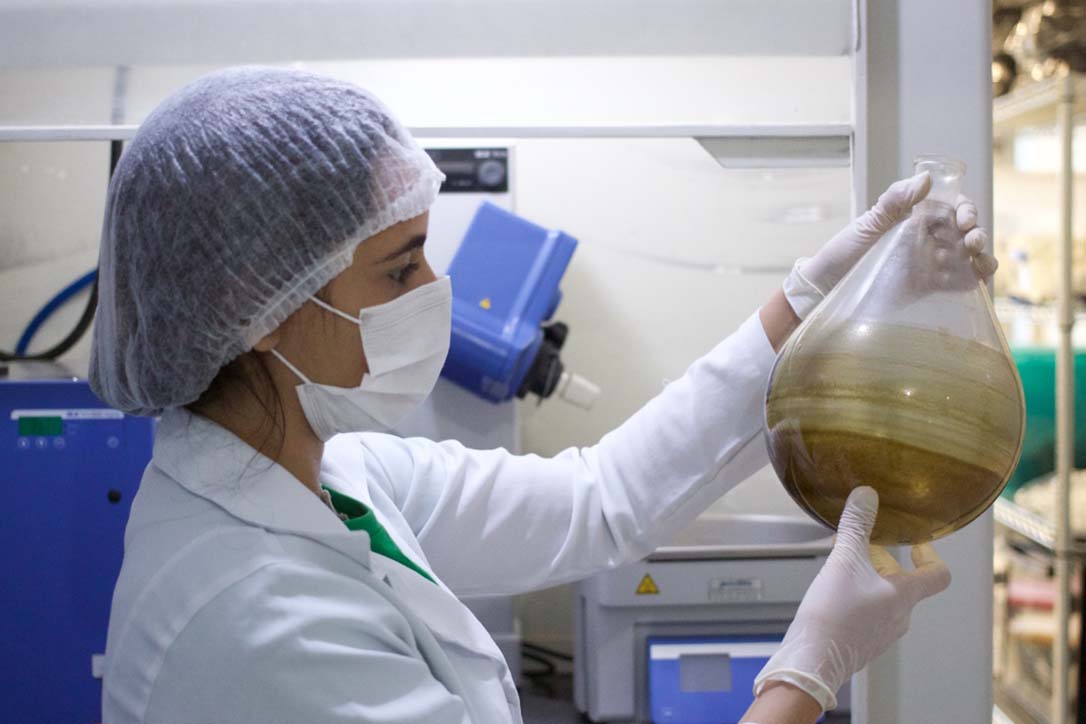
Through bravery and selflessness, Cassiano was able to treat his first patient with his own homemade cannabis oil. “I shipped my oil to João, the first kid to use my medicine,” Cassiano told us.
“João became seizure free in just 10 days!
“He spent a whole 30 days without seizures, with his mother becoming the first president and co-founder of ABRACE, as we registered as a non-profit in my home town in the northeast of Brazil.”
“As a small town, I knew the guy who registered the foundation. He knew that my brother also suffers epilepsy as well.
“Even though most incentives around here don’t normally get past this stage, he was happy to help us get registered.
“We rented a house and started to prepare for the future.”
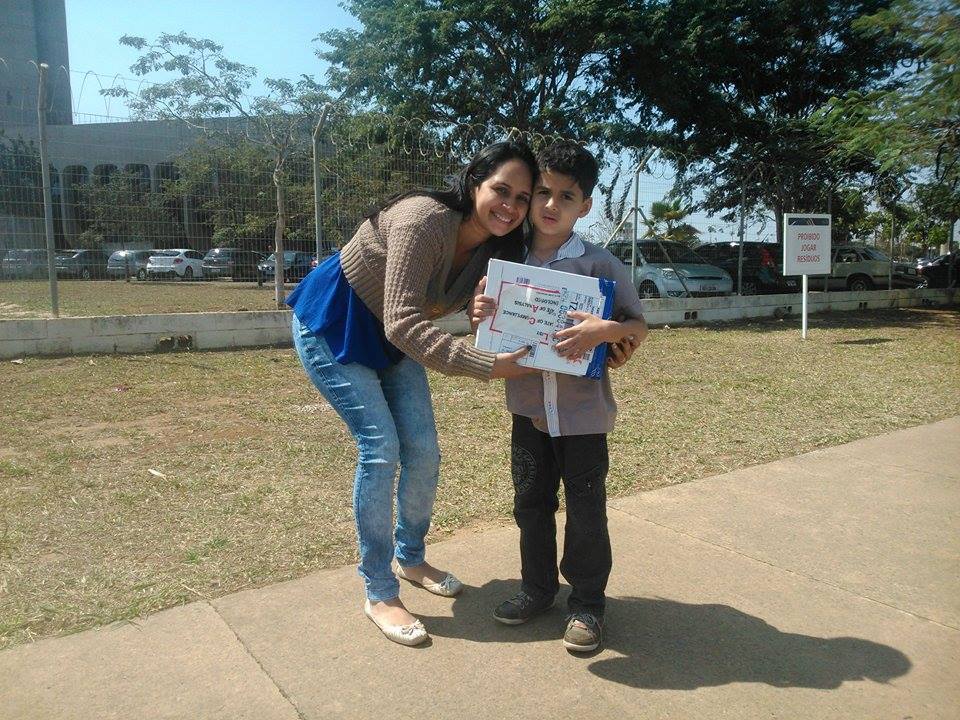
Initially, Cassiano began by using strains he could find from street dealers, with growing being too risky, potentially jeopardising the organisation’s legal existence.
However, cannabis bought from the street often contains very little CBD, as recreational consumers are looking to enjoy the high which comes from high-THC, low-CBD strains.
“Instead of growing here, we decided to buy weed from local guys,” Cassiano explained. “I knew street weed wouldn’t have much CBD, so initially we made oil with mostly THC.
“My only concern was to not overheat the oil, as we didn’t want cases of kids getting stoned.
“We’ve had success with every child so far, so I don’t believe it’s a matter of CBD v. THC at all. In my view, it’s more likely due to energy and sedation symptoms. Plus, CBD can be presented in both sativas and indicas; I think most strains are hybrids.
“The oil we make is different to hemp oil; it gives children energy, awareness and strength, as well as stopping seizures.
“We believe it can act as a neuroprotection for kids who have seizures, it helps get them playing again.
A few years later, and the demand for Cassiano’s service was becoming increasingly more in demand. With the desire to help every patient he came across, Cassiano launched his campaign to provide high-quality medical cannabis at an affordable price.

“We could not wait any longer, so we sued the State in 2017 to allow us to grow, produce and provide the medicine for the 155 patients we had at the time.
“Judge Vannesa Trigueiro a federal court substitute judge, took our case. She was recent mother who has a little girl with 3 years old. She began crying when she heard the audio interviews from the mothers begging her to permit us to grow.
“Around April she ruled in our favour! She allowed us to keep doing what were doing, all we need to do was ask for proof of prescription and proof of the condition.
“We were only 5 people working at risk when the sentence was passed, and we became the first association nationwide to have a court permit to grow and produce medical cannabis!
Since that ruling, ABRACE has exploded:
“As of today, our foundation is currently assisting 967 patients,” Cassiano said. “But we have more than 1,000 families, as many people take 2 -3 months to reorder.
“We now employ 27 people, my brother included, because after we won permission he became more comfortable to try the medicine.
“I guess all my families try some sort of product I make: salves, creams, oils, even teas! They’re seeing benefits for every medical condition you can imagine!
“Cannabis is not one medicine for one kind of decease. It’s the other way around. It’s one medicine for every kind of condition.
“I believe that back in 1900, big Pharma back sponsored prohibition in order to make patent a new way to became a major industry.”
ABRACE treats a wide variety of patients with an ever increasing number of conditions. Discussing the patients he treats, Cassiano explained:
“Epilepsy is the most common illness we are currently treating, but autism is in a close second.
“Autism cases are now coming in more frequent waves, as there is a lot of reports in the media on new research promoting cannabis for autism.
“While we used to nearly exclusively treat epilepsy, today we are treating patients with Alzheimer’s, Parkinson’s, autism, and those suffering from chronic pain.
“After I helped my mother I could not stop!“
– Cassiano, Founder ABRACE Foundation
The results the organisation is having, speaks for itself:
“I’d say around 70% of our patients are finding real relief with our medicines.
“The major issues we’re finding, however, is firstly, that patients are only starting to really see results once they’ve fully stopped using their old, pharmaceutical, medications.
“Secondly, most mothers are terrified as they are not getting support from their doctors to remove these neuroblocking pharmaceutical medications.

“As cannabinoids can act as neuroprotectors, they are a safe way to help patients withdraw from their previous medicines.
“When parents make the decision to take their kids off these medications, we start to see great results.
“The children start to regain the ability to walk! Some of them are two years’ seizure free!
“So, from the results, we can say that our cannabis medicines are highly effective, and more importantly, safe.
Finding the right genetics can be essential for certain conditions, particularly epilepsy, which seems to respond better to oils made from strains with higher amounts of CBD than THC:
“We have started to use genetics from Medical Marijuana Genetics.

“Txaki and CD-1 have proven the best strains so far.
“I think 1:1 ratio is the best I know for any medical condition, as it provides an initial high and then sedation.
“CD-1, however, gives a more calming effect as it has a lot of CBD. There’s too much demand for CD-1 at the moment!
“CBD is becoming more famous in Brazil, as doctors feel more secure prescribing it.”
Providing medication made from cannabis can be a tricky process. Cassiano has produced a variety of products to help treat different conditions:
“When administering the oils to children, we start with drops under the tongue. But I’ve developed a nasal spray for epileptic rescue, and a balm which can help topic conditions.
“We now have three types of oil, with three different ratios of cannabinoids, with a further two types of nasal spray.
“We’ve just began working on suppositories and capsules, but the main thing we’ve been working on has been improving the taste of the oils. We mainly use vegetable glycerin and olive oil, but cater to parent’s requests.
“I also recently began working with a “Magic Butter” machine, which works well.
“In 2017 we started to use alcohol in our extraction process, mixing it with other carriers after. We’re now are looking into CO2 extraction, but this is an expensive process that I only can dream about (for now!).
“For me, our most successful treatment has been that of a wonderful child, Sofia, who is now seizure-free and able to walk again.
“We also have a Parkinson’s patient, Mr. Jonas, who we’ve been keeping a video record of his progression.
“We also have had great success with dogs! Our lawyer has a dog with epilepsy who is now seizure free after using our cannabis oil.”
Cassiano parted with some wisdom for those inspired by his story to start their own medical cannabis journey:
“All countries have a legal system to protect people, so this must be utilised when human rights are at stake, right? So, why not establish organisations to try and fight for these rights!
“Non-governmental organisations are easier to establish and to help organise the fight. But, we cannot afford to wait for the law to change.
“My advice is to get together with other activists, register a non-profit, and get a lawyer to help file a lawsuit against the State… see what happens!”
Despite spear-heading Brazil’s first legal medical cannabis non-profit, Cassiano has big plans for the future:
“We are going professional with all departments working flawlessly so we can grow more and help more people. Today we can only hold 1,000 patients at a time, so all-in-all, we only can help 2,000 patients within our current structure.
“We’re planning on starting a new facility in 2019 in Campina Grande, a 2 hours city from Joao Pessoa where the main building is.
“For me, who saw the advent of the internet, I compare the increase in popularity of medical cannabis to the spread of internet and the bubble in 1998. It’s going to grow and grow!
“Many countries will be the leaders, but one day location, cost, quality and price will determine the market.
“We want to be a part of that market. We want to become more and more affordable, even reaching the point where we can provide free medicine for those who cannot afford the R$ 0,05 per mg we are charging.
“We charge around $47 (USD) for a 60 ml bottle cost, compared to $255 (USD) for an imported equivalent, and that’s before the shipping and tax!
Cassiano’s story serves as an important reminder that sometimes to do the right thing, you may have to break the law.
Conversely, the responsibility to provide patients with access to safe medication should not lay with activists. Is there another approach that the UK Government could take?
Until the day when the Government finally bases its policies on scientific evidence and compassion, could you be making medical cannabis for your local community?
If you treated 5 people successfully, recorded all your patient info and presented your case to a high court judge, would he grant you clemency and provide legal permission to make more medicine?
We can only dare to dream, but that’s exactly how the first access happened in Brazil.
Thousands of severely ill children abandoned by British Government's Medical Cannabis guidelines
Thousands of severely ill children abandoned by British Government’s Medical Cannabis guidelines
Early November headlines in the UK press raved about how ‘medical cannabis is now legally available on the NHS.’
Official guidelines from the NHS detailed how The Government “announced plans to reschedule certain cannabis-based products for medicinal use, and has laid regulations in Parliament to that effect.”
While British patients waiting for relief can take some solace that their Government finally recognised cannabis as having medical benefit, a certain degree of caution and skepticism must be taken.
This is the same Government, after all, which allowed a GW Pharmaceuticals to create a global monopoly in exporting “medical cannabis” to over 30 countries, simultaneously criminalising any patient who dared to use medical cannabis not bought from their private stocks.

It’s easy to forget that Britain’s current Drug’s Minster, Victoria Atkins, recently had to resolve herself from discussing cannabis (the single most common drug in the UK after coffee, alcohol and sugar), because her husband, Paul Kenward is the Managing Director of British Sugar, who grow upward of 80 tonnes of cannabis each year for GW under special government monopoly.
It’s may also be easy to forget that Britain was the largest producer and exporter of “medical cannabis” in the world prior to Canada’s legalisation efforts.[/fusion_text][fusion_text]
The greatest irony of all the headlines declaring medical cannabis is now legal in Britain, is that there are a disgustingly small number of patients who have been able to get a prescription for this “medical cannabis.”
We are all too familiar with the stories of Billy Caldwell, Alfie Deacon and Murray Gray. Stories of brave mothers and even braver children have managed to raise awareness to the plight which thousands, possibly hundreds of thousands, families are facing.
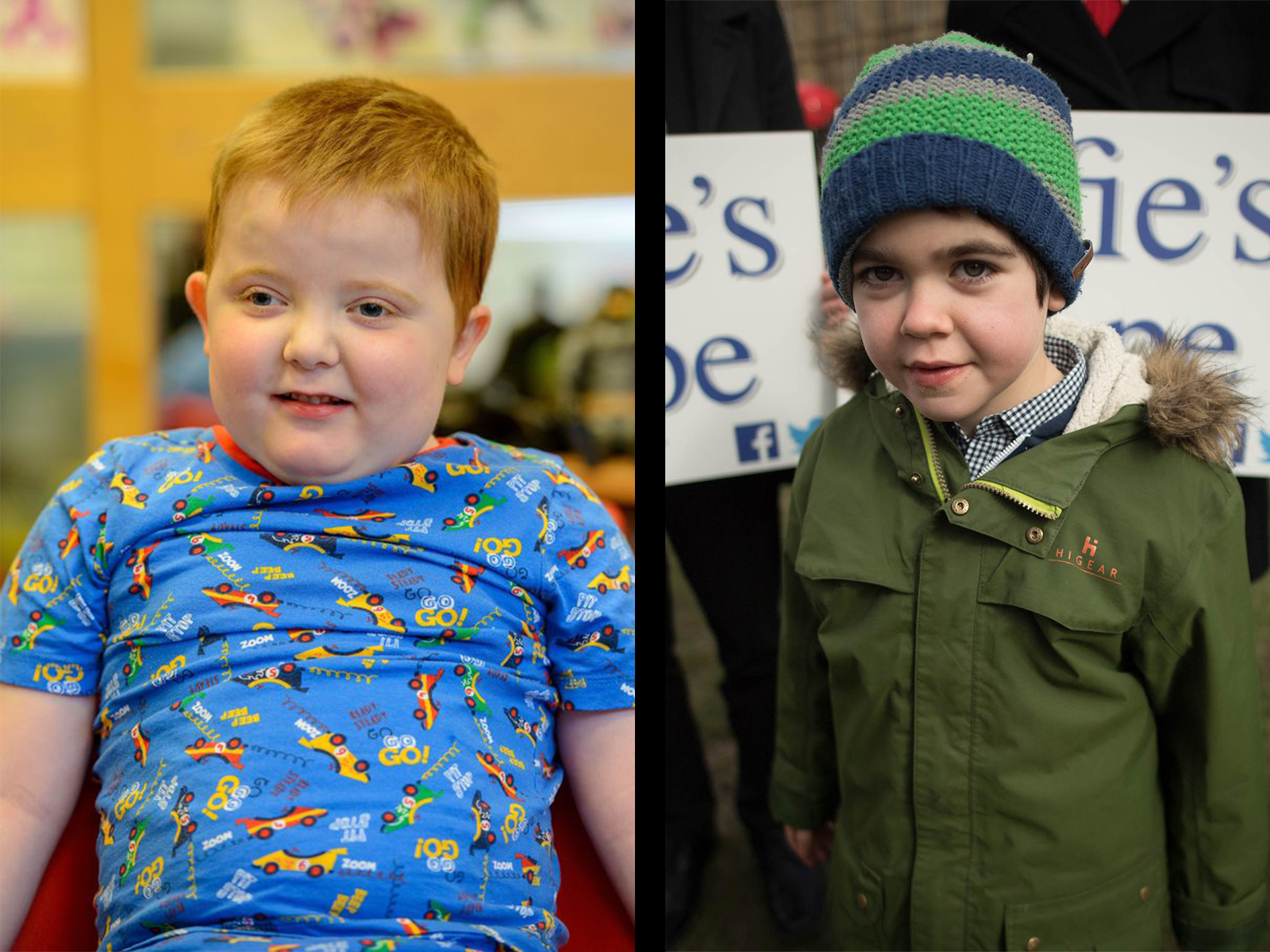
Currently, only a handful of children have been granted special permissions to use safe medication, aside from those lucky few who have test subjects for GW’s trails for Lennox Gastaut Syndrome.
There are many more parents whose children are suffering, facing life threatening situations every day who understandably are disheartened by the NHS’ guidelines for medical cannabis in the UK.
According to the guidelines:
“NHS England expects that cannabis-based products for medicinal use should only be prescribed for indications where there is clear published evidence of benefit or UK Guidelines and in patients where there is a clinical need which cannot be met by a licensed medicine and where established treatment options have been exhausted.
“In addition, a Specialist doctor on the General Medical Council Specialist Register should only make the decision to prescribe within their own area of practice and training (e.g. physicians for adults should not be prescribing for children) and the decision to prescribe should be agreed by the multidisciplinary team.”
“Due to the limited evidence base and their unlicensed nature, the Government has chosen to restrict the decision to prescribe cannabis-based products for medicinal use to only those clinicians listed on the Specialist Register of the General Medical Council. This restriction has been set out in regulations.“
– NHS Medical Cannabis Guidelines
What this means, is if you are a child suffering from multiple seizures, you must have exhausted all “established treatment options,” meaning every pharmaceutical option first!
Given the fact that 30% of epilepsy is drug resistant, and that there are many drugs to treat it, at what point can one realistically exhaust all treatment options?
There are many approved and clinically proven epilepsy medications, however when one compares the side effects of these drugs to those of absorbing plant-based cannabinoids, medical cannabis may seem the safer option.
Side effects of Epilim, as stated by Epilepsy Action can include “Nausea, stomach upset, diarrhoea, and weight gain (due to increased appetite), increased levels of ammonia in the blood, and reduced platelets in the blood.”
Benzodiazepines which are prescribed as rescue medications have strong effects also:
confusion, dizziness, weakness, blurred vision, breathing difficulties, coma, slurred speech, a lack of coordination, not to mention the withdrawal of these Benzos can have on a human body.
When opponents of legalising medical cannabis claim that cannabis can have a negative impact on a child’s developing brain, they fail to take into account that seizures have a far greater impact, or that a dead child’s brain cannot develop.
Each of these children have an Endocannabinoid System (ECS), which not only receives external cannabinoids (the chemicals in cannabis), but actually endogenously produces them. They don’t have an “Epilim system” or a “Benzodiazepine system,” yet these drugs with far greater risk and side effects are scheduled as having less danger than the schedule 2 cannabis derived medicines have been earmarked for.
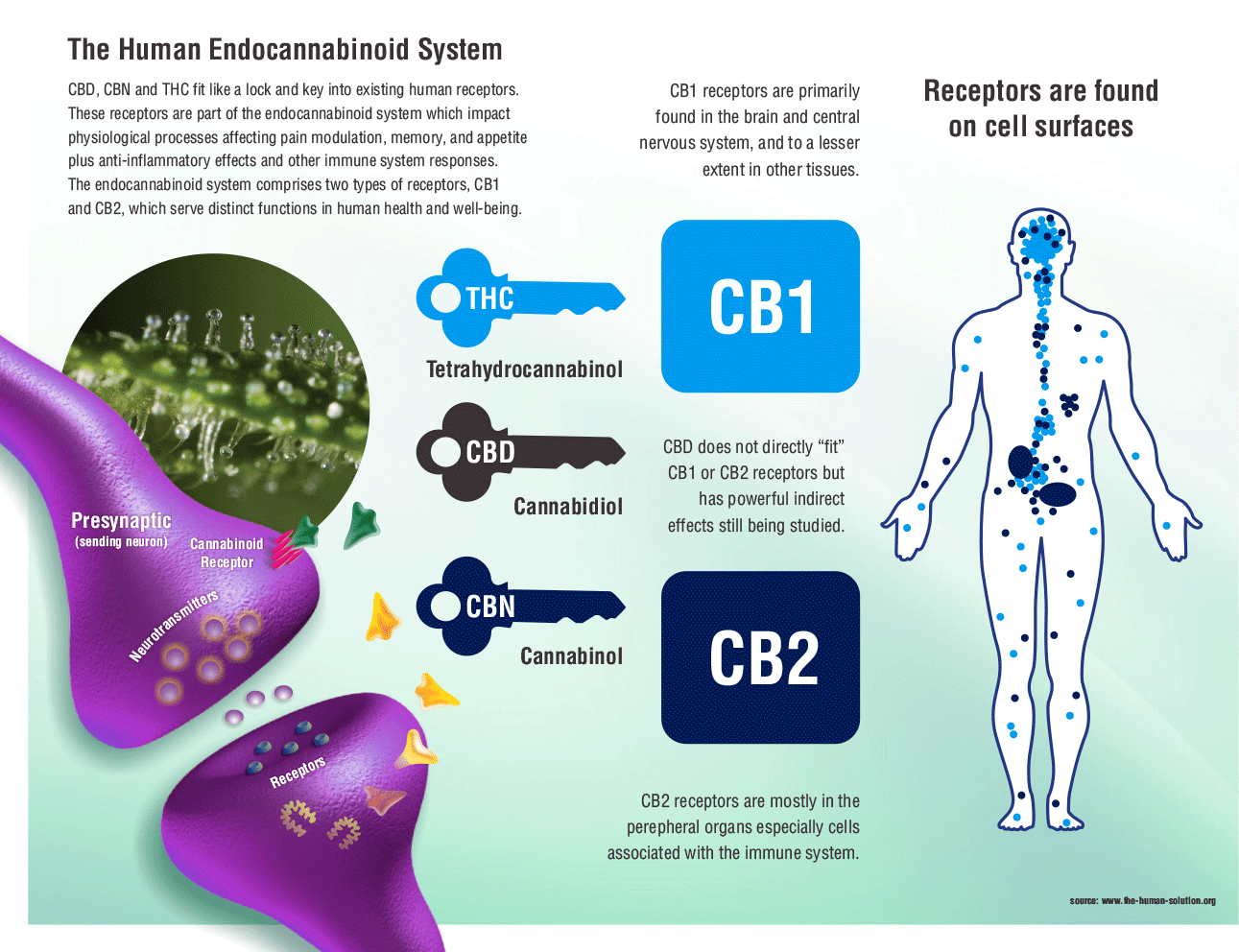
In our humble opinion, all of these children and every other human being in the UK has an unalienable human right to access this plant. Not next week, not next year but now and today.
We are not doctors and do not claim to render medical advice, but how is it possible that our medical system and Government are not allowing a more compassionate stance?
The most severe cases of childhood epilepsy can result in death from Tonic-clonic seizures. The longer these go on throughout a child’s life, the more at risk that child is. Seizures can severely disable a child, having a devastating impact on their developing brain.
When opponents of legalising medical cannabis claim that cannabis can have a negative impact on a child’s developing brain, they fail to take into account 2 facts:
- Daily seizures and some of the side effects from epilepsy medication can also damage the Brian and on the worst of cases be fatal.
- The type of cannabis oil being is not the high THC variety, but high CBD low THC cannabis oil or THCa tinctures. These have very minimal, if not no pyscho active effect.
So, to all the parents who have not gained access through the NHS what are your options to gaining access to medical cannabis?
- You can try and get legal get legal access through the NHS following the above guidelines.
- You can travel abroad to legal territories such as Canada, California, Colorado, Holland (Bedrocan), Germany and Israel and purchase cannabis oil under the supervision of a doctor.
- You can make you own cannabis oil with identical CBD to THC ratios or obtain on the black market.
We at MMJ UK understand that many mothers, due to the threat of social services and the desire to have their child surveyed by a trained doctor who can prescribe a safe cannabis product, must seek out options 1 and 2.
However, given the fact that many of these parents are still being denied access to potentially lifesaving medicines, many simply cannot afford to up route and travel out of the UK and the simple truth that are no recorded fatalities from cannabis ever recorded in the history of the world, option 3 is the only viable option.
So, what is even the difference between “medical cannabis” and cannabis anyway?
Not a great deal. The cannabis Sativa L plant has many varieties, with many possible cannabinoid and terpene profiles all of which can interact with your Endocannabinoid System for therapeutic benefit.
All of these varieties and all of the cannabinoids can be extracted using fat to make whole plant full spectrum cannabis oil. Even “skunk” or high THC varieties can be extracted to make non-psychoactive THCa tinctures (THCa only becomes psychoactive when heated above 50C).
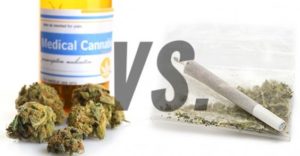
There are controversial advocacy groups and lobbyists who will try to convince you differently. They will talk of the risks and differentiation between cannabis seeds final cannabinoid ratios and the dangers of pesticides and molds in untested preparations.
These risks can easily be eliminated by: A) testing your products for cannabinoid ratios, molds and pesticides (this can be done by research facilities, such as Canna); and B) Growing your own with specific strains and no pesticides.
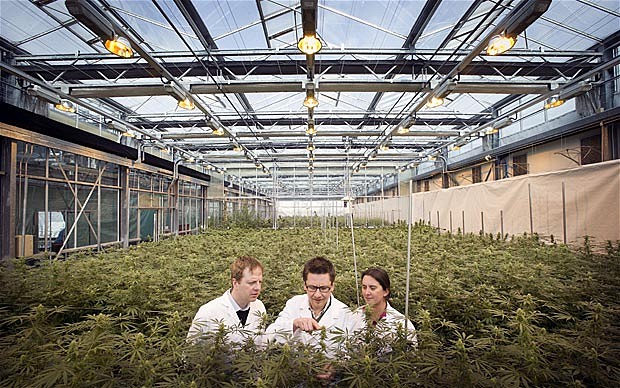
It could also be argued that’s it is in the interest of pharmaceutical companies such as GW, Tilray and Bedrocan to promote the medical cannabis vs recreational cannabis argument, as this leaves them with a monopoly and people believing that their medicine works and recreational is either different or not medical and definitely not possible to make at home.
We are happy with the introductions of so many cannabis medicines and subsequent access to cannabis and also understand that regulations, full testing, and culpability is necessary for medicines to be approved. But we also believe that the Cannabis Sativa L plant has been used as a medicine for 1000’s of years and its therapeutical properties are certainly not exclusive to the companies have been growing it for less than a decade. For millennia civilisations have been extracting all the available cannabinoids from plants all around the world.
Pharmaceutical Companies such as Tilray and GW will sometimes use isolated CBD and THC, not because it is more effective, but because it is easier to patent a specific formula whereas anyone can make a 20:1 extract using any of the above-listed strains. There are only 4 basic variables when it comes to ‘medical cannabis’:
1) Type of strain(s) used:
This provides the cannabinoid ratio of THC and CBD. Traditionally, recreational cannabis in the UK is high THC and low CBD, for childhood epilepsy this is not suitable due to the psychoactive nature of THC. However, there are many strains of the opposite nature with low THC and high CBD.
We at MMJ helped create such a strain, Candida CD1 that is always under 1% THC and up to 20% CBD offering a 20:1 ratio every time. There are many other strains such as Cannatonic, CBD crew’s Therapy and Dinafem’s Dinamed that offer similar ratios.
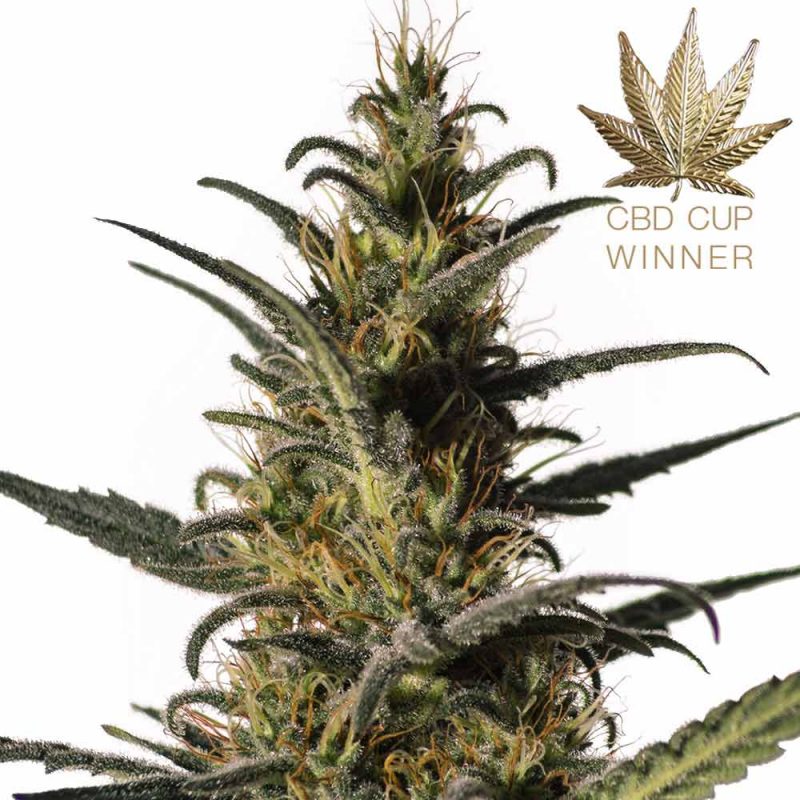
2) Form:
Extract, flowers, tinctures, capsules, suppositories and topical applications.
These forms of cannabis define the method of ingestion: smoking/vaping, oral, sublingual, rectal and cellar absorption.
- Dosage:
This is the MGs of cannabinoids ingested per patient. Even without testing, it is very easy to work out MGs of cannabinoids per cannabis preparation.
For example, if a strain has 20% CBD and 1% THC and one extracts using any type of lipid fat (instructions at end of article) one divides by ten, so typically an olive oil extraction will have 2% CBD and 0.1% THC. This translates as 20 mgs or CBD per ML and 1 mg of THC per ML.
4) The producer:
There are many pharmaceutical companies mentioned above that are making cannabis extracts and good medicines, but there are also many parents and patients doing exactly the same using these variables as a guide. They are using the same strains, providing the same identical and suitable 20:1 and multiple ratios, making THCa tinctures for the simple reason of alleviating tenor child’s suffering.
We have sent seeds to legal foundations that have had, and are continuing to have, great success simply by growing the cannabis plant and extracting using lipid fats such as glycerin, olive oil, MCT oil, and coconut fat.
One of these is the Abrace Foundation, who have provided access to over 1000 children using fat extracted cannabis oil. They have done this an a manner which generations of people have had access to for centuries. By growing a plant an cooking the dried herbs in fat.
What are the inherent risks of this plant when compared to what must be “exhausted” first?
If you are a parent or a caregiver would you consider growing and using cannabis medically?
Any parents of epileptic that children have been denied access to medical cannabis in the UK or anywhere across the world if you wish to be provided compassionately with high CBD cannabis seeds for the purpose of making non-psychoactive cannabis oil for your children (within jurisdiction) please contact and us in strict confidence jlg@medicalmarijuana.co.uk.
A full recipe for safely making your own medical cannabis tincture at home can be found on our website here: A Step-by-Step Guide to Making Medical Cannabis Tincutre.
A Step-by-Step Guide to Making Medical Cannabis Oil Tincture
A Step-by-Step Guide to Making Medical Cannabis Oil Tincture
- Do you need access to medicinal cannabis?
- Could you be making full spectrum cannabis tinctures?
- Here, we provide a detailed, step by step guide to safely making your own cannabis oil tincture at home
For thousands of years, long before pharmaceutical companies such as GW Pharmaceuticals or Tilray, communities across the globe have been using fats to make medical cannabis, using fats to extract a full spectrum of cannabinoids for a variety of medical purposes.
There are several good reasons why using fats to make tinctures, as opposed to smoking raw cannabis, is the best way to maximise the medical potential of cannabis.
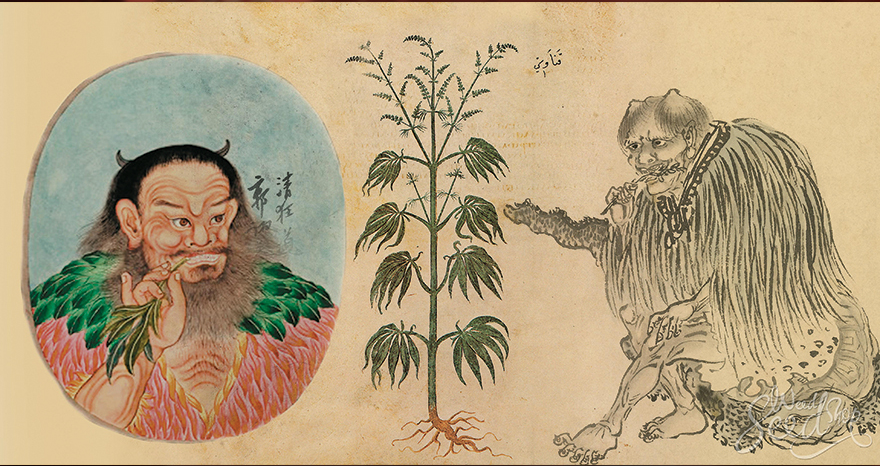
Lipid fats act as ‘carriers’ for cannabinoids (the main chemical present in cannabis), allowing them to bind to our Endocannabinoids System (ECS), which have receptors to receive the cannabinoids.
Imagine cannabinoids are a key and the different receptors on the ECS are different key-holes, with each cannabinoid having a different purpose, e.g. THC is more ‘psychoactive’ than CBD, which primarily targets inflammation.
By extracting the cannabinoids into a lipid fat more of them are absorbed and bind to the ECS. Smoking cannabis causes combustion, which reaches a too high temperature, destroying the majority of cannabinoids present in the cannabis flower.
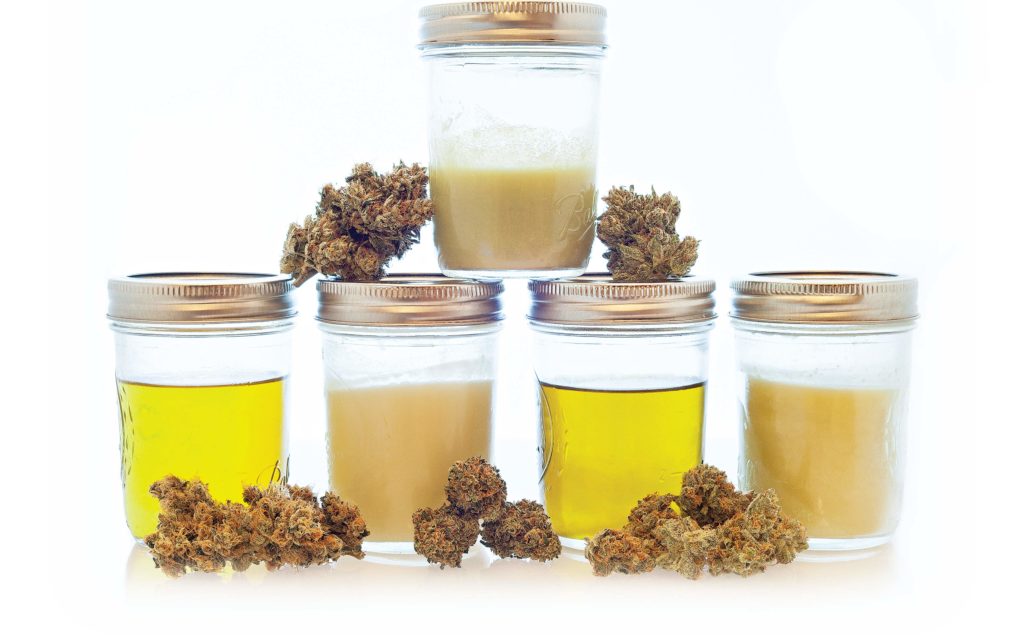
Firstly, fats aid cannabinoids to be absorbed into the bloodstream. Taken sublingually under the tongue, the cannabinoids go straight into the bloodstream, which helps them avoid degrading or combusting.
For example, taking cannabis tincture prevents THC being degraded into Delta 9 THC in the stomach, which has a far greater psychoactive effect than normal THC, which is created by smoking.
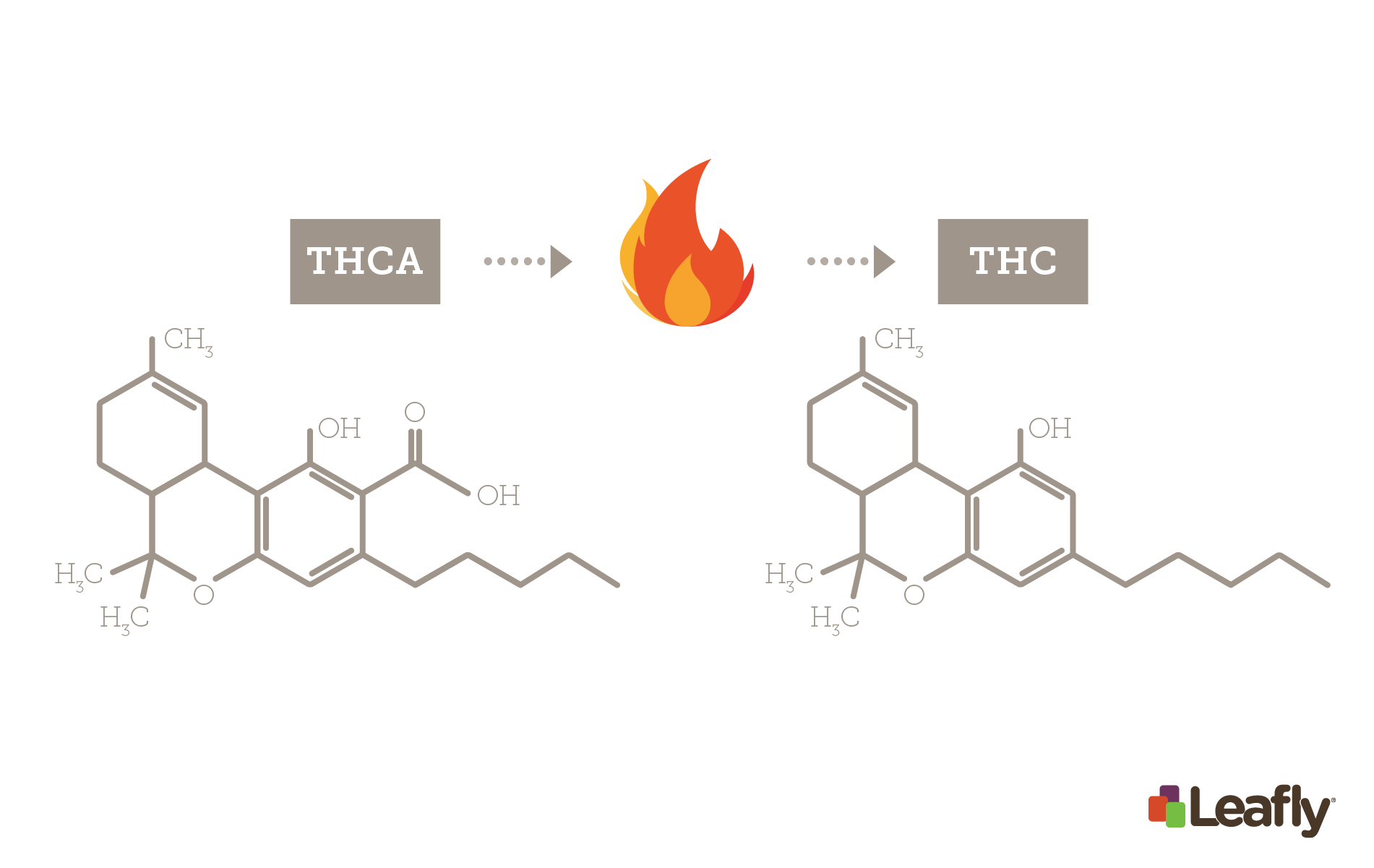
Secondly, it takes your body up to 6 to 8 hours to break down the fat molecules in the tincture, so the cannabinoids last in the bloodstream for far longer, thus far smaller dosages can be more effective than either smoking or a pure extract that can go through the digestive system more quickly.
It is easily possible to make cannabis tincture at home, following these basic steps.
*Tinctures can be made using any cannabis strain. A higher CBD lower THC strain is advisable for tinctures made for children with epilepsy.
Step 1. Decarboxylation
- Place dried ground up cannabis flower and leaves (must all be dried) in baking tray with a layer of tin foil loosely on top.
- Heat for 110 minutes at 110 C (110 x 110).
- Check temperature regularly with a thermometer, infrared if possible, moving the flowers around checking for any heat spots.
Heating at this temperature decarboxylates the cannabinoids and activates the THC, CBD and other cannabinoids, removing amino acids attached to the cannabinoids. THCa becomes THC. THCa is a non-psychoactive cannabinoid before decarboxylation.
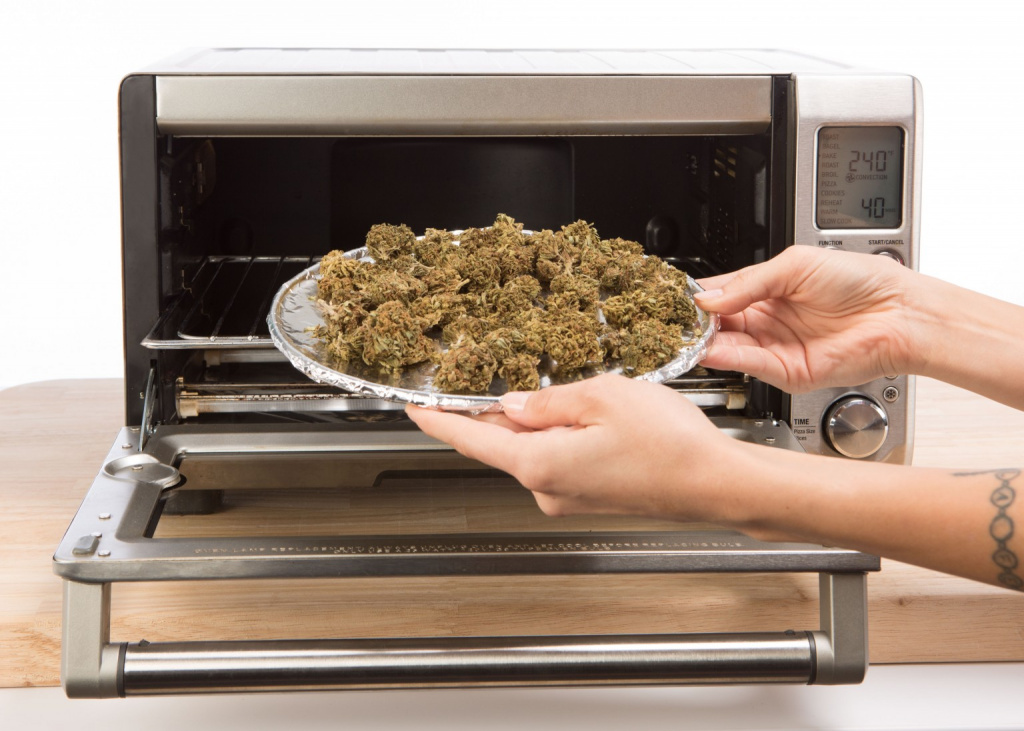
*If one is wishing to make THCa tinctures for children start on step 2.
Step 2. Extraction
- Extract all of the cannabinoids and terpenes from the plant (full spectrum) using any type of lipid fat.
- Using large pot, mix plant material with any type of lipid fat, and cook at a low heat 40-50 c for 4-5 hours.
– Whilst heating, the cannabinoids will attach themselves to the fat molecules. - Stir regularly.
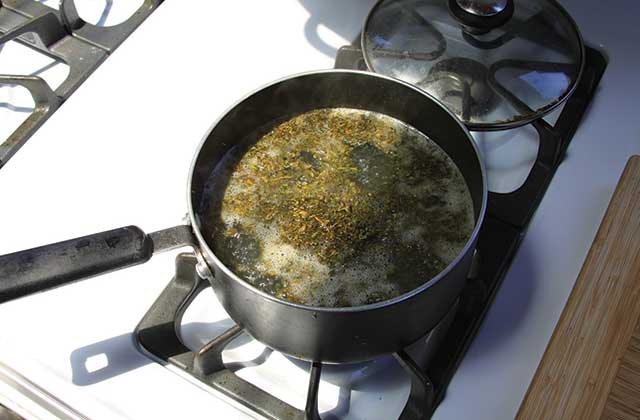
You can use any type of fat, for tinctures organic olive oil, MCT oil, hemp seed oil are all good, organic is even better. For capsules or topical creams, coconut fat is better for a more viscous end product.
Measurements can be 1-3 oz of dried flower for every 250 ml of fat, just make sure all material is submerged
Step 3. SEPARATION
- Using a muslin cloth, seive all the liquid fat into another pot removing all of the plant material and separating the liquid.
- Squeeze all of the fat with as much vigour out of the raw mulch and into the new pot.
– If you have a small wooden apple press you can get more out of mulch.
– Typically one should get 90% of available cannabinoids first bind.
The mulch can be extracted again separately following the above steps for but will produce a far lesser amount of cannabinoids, so can be used to make a weaker balm with cocofat.

Step 4. Further Herbs
- Put a new pot back on low heat for a further 1 hour.
- At this time one can add further therapeutic herbs in the form of essential oils.
Many have found adding frankincense, cinnamon and myrrh useful. - From essential oils one drop of each for every 25 ml is adequate.
If you are making this for someone else check if they are suited to whatever you are adding. Again, organic oils are preferred but any lipid fat will work.
Step 5-Bottle
- Sterilise all bottles and pour carefully into them before sealing. It’s best to use measuring basters when filling bottles.
- Pour into 10 ml or 30 ml Glass “dropper bottles,” which can be bought cheaply on eBay, Amazon, etc.
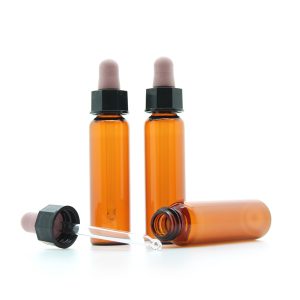
You may also want to have your cannabis medicine tested to find out the exact amount of cannabinoids you managed to extract. These test also show information on any possible contaminants and pesticides, e.g. https://www.fundacion-canna.es/en.
If you follow above, you have now extracted the full spectrum profile of whatever cannabis plant you have used as your base. If you are growing Candida CD1 then this may be useful for children with epilepsy or autism and is not pyschoactive.
CD1 has a cannabis profile with some THC as opposed to a hemp profile, which has on average 0.1-0.2%.
Cannabis oil made using these steps, and with CD1, is not the same as CBD oil derived from hemp. A hemp strain will have typically have 4-7% CBD as opposed to Candida CD1 which averages 18%.
To find out a dosage of MGs of cannabinoids, just divide CBD or THC percentage by 10 so if one has a CBD strain with 20% CBD and 1% THC, A typical fat extraction of that strain will have 2% CBD and 0.1 % THC, this translates as 20mgs of CBD and 1mg of THC per ml.

For full biodynamic, do the whole process over a full or new moon.
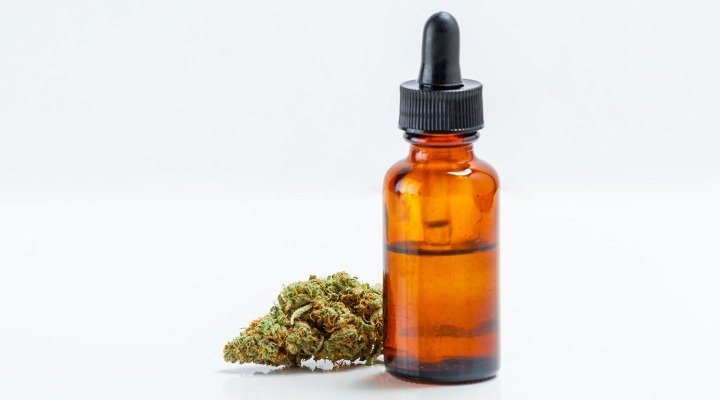
References and further Reading
Medical Marijuana Genetics - The CBD Dominant Seed Bank
Medical Marijuana Genetics – The CBD Dominant Seed Bank
In 2014, the founders of Medical Marijuana Genetics started becoming aware of the therapeutic properties of the cannabis plant whilst desperately treating the symptoms of one of their mother’s late stage pancreatic cancer.
Not long after her first dose of cannabis oil, her ability to move around relatively pain-free was hugely increased, enabling her to tend to her beloved garden in the weeks leading up to her death. The benefit that the cannabis oil had given her was clearly visible to those around her and awoke a passion and deep interest in the use of cannabis as a medicine. Shortly after, the website www.medicalmarijuana.co.uk was born and a little later, a concept to source and sell seeds that could create cannabis plants with exciting therapeutic benefit, at the same time as raising awareness.
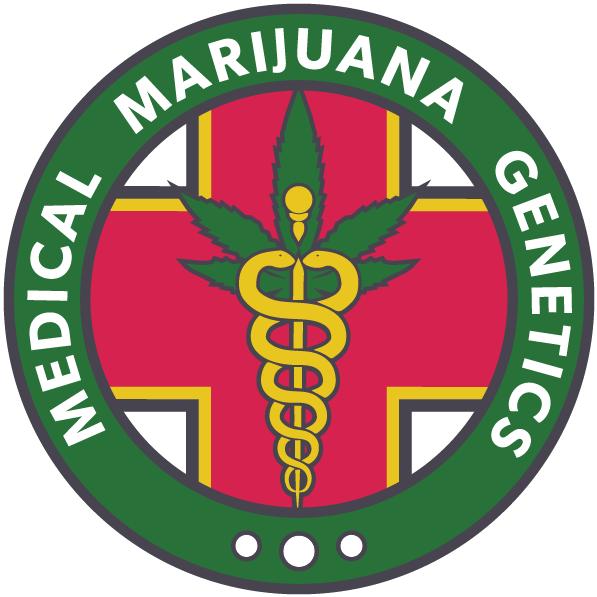
Through the organisation’s interaction with patients and cannabis communities worldwide, it became apparent very quickly that access to cannabis genetics high in any other cannabinoid than THC was severely limited.
As a result of this, Medical Marijuana Genetics was formed and commenced work with award winning breeders and caregivers, with the initial aim of creating a line of CBD dominant cannabis strains.
MMGenetics created Candida-CD1, a 20:1 CBD to THC strain, and a further line of CBD dominant cannabis strains, 5 of which are available now.
Testing the cannabinoid profiles of CD-1 revealed a CBD count of 20%. This percentage is the highest known count in a CBD-rich phenotype ever created in Europe.
Following the overwhelming success of their first grow, Medical Marijuana Genetics created a further 12 elite strains from Candida crosses, all of which have been genetically selected to provide access (within lawful jurisdiction) to the widest range of therapeutics that the cannabis plant, and CBD in particular, has to offer. This includes treatments for symptoms such chronic pain, inflammation, seizures, convulsions, gastro-intestinal disorders, nausea, vomiting, skin conditions, bacterial infections, anxiety, depression, cancer cell growth and much more.
Research continues at Medical Marijuana Genetics to create strains that contain beneficial amounts of other cannabinoids and terpenoids.
For the time being, all of the strains available from Medical Marijuana Genetics are CBD dominant or CBD-rich (1:1) and all strains contain a minimum of 10 % CBD.
Medical Marijuana Genetics are one of a growing number of seedbanks that encourage customers, who are legally permitted to grow, to publish laboratory results of the cannabis they have produced.
Australia is Legalising Medical Cannabis - Here's Why
Australia is Legalising Medical Cannabis – Here’s Why
Legal access for patients suffering from ailments such as Epilepsy and Cancer could be available as soon as March. Laws are being changed and last week the Australian Government agreed unanimously to make amendments to the Narcotics Drugs Act 1967.
Health minister Susan Ley who has been at the forefront of pushing legislation made this statement.
“This government understands that there are some Australians suffering from severe conditions for which cannabis may have applications and we want to enable access to the most effective medical treatments available,”
“The Turnbull Government will introduce landmark legislation providing the ‘missing piece’ for Australian patients and their doctors to access a safe, legal and reliable supply of medicinal cannabis products for the management of painful and chronic conditions.”
The Australian Cannabis story is fascinating, the country is surrounded by the strictest drug laws in the world, places like Bali have often executed Australians for Drug offences and many people are currently imprisoned for cannabis offences in Australia under laws now set to change.
Since 1967, cannabis has been outlawed, viewed as a drug to get you high and classified as a schedule 1 drug with no accepted medical use. In the last 18 months, the level of support has sky-rocketed with a now astonishing 97% of Australians supporting the use of medical marijuana.
How did this happen?
How did Australia and the Australian people go from being one of the most anti-drug western countries, with the same media and corporate interests and the same society based stigma around cannabis, to be leading the way globally for cannabis legalisation?
One word, compassion.
With the medicinal properties of the Cannabis Sativa L plant being realised globally, many families are now turning to cannabis oil in desperate attempts to alleviate their loved one’s suffering. Families members suffering from cancer, children with aliments such as ‘Dravet’s Syndrome’ having upwards of 100 seizures a day all of whom can benefit from the medicinal use of this plant.
Stories of families such as the Haslams, who lost their son to cancer then began a nationwide campaign and petition to legalise. A family who pressurised not only the NSW local government into law-making amendments but also put pressure on global governments with an open letter published in the Guardian.
“Being sympathetic to a cause sounds lovely, but it’s not enough. When that cause is decriminalising medicinal cannabis, we’ve heard enough sympathy. It begins to sound like apathy. It is a delaying tactic. An excuse for further procrastination. Meanwhile, horrifically sick people – including those with terminal illness and life threatening conditions – continue to suffer unnecessarily when cannabis could afford them relief.”
The Wallace’s, whose son Cooper has severe brain damage, cerebral abscesses, hydrocephalus, epilepsy and cerebral palsy is now attending school for the first time and whose parents credit CBD rich cannabis oil for saving his life:
“It’s the reason why he’s still with us today, and without it he will eventually die,”
Who can forget the story of Adam Keossler, a father who was arrested for treating his terminally ill 3 year old daughter Rumer with cannabis oil, and the subsequent global petition to allow him to do that raising over 200,000 signatures.
‘Her cancer-ridden little body was alive again— Rumer had almost instant quality of life, she would say, ‘Daddy, tummy’s not sore,’ and she would be able to eat like a champion and begin to gain weight.’
There is no more powerful story to raise compassion than a family trying to save their child, and certainly it is impossible not to feel compassionate towards these families. In all cases these children are facing life threatening diseases and unmentionable suffering. Their parents are using a simple plant to ease that suffering. In most cases that medicine has been richer in CBD than THC so is not as psychoactive and not the same genetically as the commercially available high THC strains most of us know today. All have been brave coming forward risking prosecution. All have done that so that other parents in similar situations can be made aware of this plants medicinal benefits.
These small family struggles have become a national discussion and changed the face of marijuana in Australia for ever. We salute these Australians in their bravery, persistence and honesty in coming forward, and the Australian public who have shown such overwhelming compassion and support.
The rights of families to choose how to medicate their sick children and loved ones have been paramount in raising awareness to this plants potential.
Why would any parent put their child at risk?
More importantly why are patients all over the world being denied their basic right to medicine?
We hope that as more CBD rich cannabis medicine becomes accessible, more families will turn to this ancient medicinal plant. Success stories will go public and the stigma caused by 80 years of lies and misinformation will change public perception.
After all, prior to the last 80 years of misinformation and the ‘war on drugs’, this plant was used medicinally by civilised societies for millennia.
MMJ Visits California - Home of the Longest Running Medical Marijuana Program in the World
MMJ Visits California – Home of the Longest Running Medical Marijuana Program in the World
Welcome to the state of California, Under Proposition 215, The California Compassionate Use Act, I am legally entitled to carry up to 8 ounces on my person and grow 6 mature plants and 12 immature cannabis plants in the privacy of my own home.
The California Compassionate Use Act has been in effect since 1996 and is the longest running medical marijuana program in the world of its kind. It covers the following illnesses: cancer, anorexia, AIDS, chronic pain, spasticity, glaucoma, arthritis, migraine, or any other illness for which marijuana provides relief. Physicians have recommended marijuana for hundreds of indications, including such common complaints as insomnia, PMS, post-traumatic stress, depression, and substance abuse.
MMJ visited California to see what actual legal medicinal cannabis access looks like.
On arrival, we went to the world famous Venice Beach to acquire a medical marijuana card with great ease. There amongst the beach front tourist stalls one can’t miss the guys dressed in green with large cannabis leaf banners directing you to a Doctor’s practice for an assessment. I took my photo-id, filled in 3 forms, paid $40 and was ushered into the Doctor’s practice, answered 3 questions (about my sleep related medicinal cannabis use) and half an hour later I was the proud owner of my own medical marijuana card.
With my “patient ID” I can legally access cannabis medicine in the State of California through one of the 1000 plus regulated medicinal cannabis dispensaries. Further to the 8 ounces I can carry on my person, I can grow plants at home and more importantly I now have legal access to a full spectrum of tested cannabis products. CBD rich cannabis ACDC 25:1 CBD:THC, edibles, tinctures, and fully decarboxylated cannabis oil. Yes, that is correct, within 24 hours of arrival into the state of California, I had legal access to fully tested organic decarboxylated cannabis oil, High THC strains, topical applications, 1:1 strains and ACDC 20:1 CBD rich Oil for the treatment of epilepsy.
We visited as many dispensaries as we could, some of them operate under the guise of medical marijuana but are nothing more than Amsterdam Coffee shops, with attractive ladies selling high THC raw cannabis flowers as quickly as possible to people that want to get high. The best of them however offer a fully holistic service to medicinal cannabis patients, with sound medical advice from in house doctors, a range of every known cannabis product and informative staff who are both well educated in the science and clinical research of cannabis and warm and helpful to patient’s needs.
The best three Medicinal Cannabis Dispensaries in the State of California are The 99 High-Tide Collective in Malibu, The Cornerstone Collective in Los Angeles and the Harborside Health Center in San Francisco.
The 99 High-Tide Collective was started by Yvonne Delarosa Green, a local television personality who while treating her mother’s cancer with cannabis oil, visited dispensaries and found them ‘dark and uninviting’ and wanted to provide people with a place that “someone could take their sick mother, sister or wife to, that was more comfortable, relaxing and beautiful.” Boy have they done that well, with the lovely manager Alex and his warm staff answering all my questions knowledgeably in the most caring and patient friendly way. On top of the most organic and outdoor grown cannabis flowers, they stock a wide range of CBD rich products, RSO, the excellent procana caps which endorsed by a board of doctors make measured (mg) doses of CBD rich extract, ‘Magic Potion’ from Emerald Triangle Genetics (combination of three different 25:1 CBD to THC pulivars ) and finally ACDC 25:1 raw organic outdoor cannabis flower which we could not find anywhere else. It should also be noted that Delarosa Green’s mother is cancer free now.
The Cornerstone Collective is California’s first research based medical marijuana collective, whose main goal is to “provide a safe, responsible, and welcoming environment for our patient community”. They are non-profit and highly professional outfit (walls are decorated with GW terpene charts) and run an extensive compassionate access program providing medicinal cannabis to low income patients, ex-veterans, senior citizens and the terminally ill. They provide a pleather of decarboxylated cannabis oil with four types available from their ‘Healing Oil’ range high THC, high CBD, 2:1 and 7:1 (CBD to THC). This is on top of the range of topicals and high THC flowers available. The only thing missing here was good range of outdoor natural landrace flowers.
The Harborside Health Center is the largest medical cannabis dispensary in California providing cannabis medicine to over 200,000 patients and is the Macy’s of cannabis dispensaries. The Center was started by Steve Deangelo, America’s foremost cannabis campaigner who has been raising awareness for over four decades and playing crucial roles in nearly every law change that has happened here. Founder of Americans for Safe Access, Steve moved to California in 2000 and started Harborside after being disillusioned when congress vetoed his inspired ‘Initiative 59’ that had won a majority vote in Washington and would have made compassionate access to medicinal cannabis legal there. Steve is probably the most connected man in cannabis and maybe the most knowledgeable too. Harborside reflects that, with the widest range of cannabis medicine available to man, every form of oil with CBG and CBN extracts available, all tested for any contaminants and lab research provided for every product. With an emphasis on “sun grown” medicine, they are big on patient education too, with classes on cultivation and how to make your own oil and an enormous amount of seeds and clones available for patients that wish to grow their own medicine. Their mission is to ‘Help every individual person who comes through our doors feel truly cared for, valued and respected’, and ‘Encourage engagement of the mind-body-soul nexus in the healing process’. They do this outstandingly.
So this is what medicinal access should look like; under a physician’s advice, one can gain access to every conceivable cannabis product one can grow for medicinal use at home. One can travel with up to 8 ounces on your person without any fear of reprisals; people here openly smoke or vape cannabis on the street with a fine being the only worry (if you are within 500 metres of a public building) and above all medicinal cannabis patients are treated as patients, not criminals.
How did this happen?
Awareness and the very nature of democracy is in full effect here. The localised state law changed in 1996 when Prop 215 (The Compassionate Use Act) went against the Federal law that still classes cannabis as a schedule 1 drug. The other American states that allow medicinal cannabis operate on the same basis with every state’s right to govern itself being paramount to medicinal cannabis access. This hasn’t stopped the DEA raiding and shutting down independent dispensaries in California and beyond. The amendment lists the states that have medical marijuana laws and mandates that the Justice Department is barred from using federal funds to “prevent such States from implementing their own State laws that authorize the use, distribution, possession, or cultivation of medical marijuana.”
As the rest of the world gears toward medicinal cannabis access, we hope and pray that the UK government will look at the example of California where medical marijuana has safely been in effect since 1996, where millions of patients have been cared for, where the standard of tested medicinal cannabis is of the highest order and where no-one has ever died as a result of the choice of their medicine.
Meet the Haslams: The Family that Legalised Medicinal Cannabis for Australians
Meet the Haslams: The Family that Legalised Medicinal Cannabis for Australians
“I’m in a constant state of amazement. I would gladly give it up and have Dan back in a heartbeat but that’s not the way life is. We just had to do this, we had no choice,” – Lucy Haslam
This month, as Australia announces wide scale changes to cannabis laws, many cancer patients and parents of epileptic children can look forward to medicinal cannabis being a reality. There is one Australian family who have made that reality possible, credited with not only changing public opinion with their relentless campaigning for the sick but actually bringing about legislative change with a 245,000 strong Government petition. They are the Haslams.
The Haslams were upstanding citizens (Lucy worked as a nurse for 25 years and her husband Lou was a drugs squad officer in the NSW Police force for 35 years) until they were forced to break the law to help their son. Dan was 20 when he was diagnosed with Stage 4 Bowel Cancer in 2012, the Haslams at this time had no knowledge of medicinal cannabis, their collective working experience making them wary of any illegal drugs. It wasn’t until Dan began his crippling chemotherapy that they unwittingly became criminals, the rest is history.
“It caused him to suffer from uncontrolled nausea and vomiting after every chemotherapy session. We were desperate to ease his suffering.”
“It wasn’t until a fellow cancer sufferer suggested he try cannabis that his life with cancer became a little more tolerable. A sick young man reluctantly tried a joint and just like that, he felt so much better. He gained an appetite, had his nausea and vomiting addressed and was able to maintain his weight through his ongoing treatment.”
Dan and his mother began campaigning for the use of medicinal cannabis for cancer patients and brought it to the media’s attention, he became the face of medical marijuana meeting numerous Australian news reporters and eventually NSW premier Mike Beard, who was so moved by their story that he set in motion the law change that exists today:
“I will never forget the look in his eyes the first time I met him and it will stay with me forever,” the Premier said in a statement. “Dan made a lasting impression on everyone he met, but, more than that, he left a legacy in NSW that will be felt across the nation, and I believe the world. Every step we take on medical cannabis will be built on the footsteps he left behind.”
After four years of battling Dan died on the 25 February this year, right up until his death he never stopped campaigning, raising awareness of cannabis oil as a treatment for cancer. His mother promised that she would continue his fight to legalise medicinal cannabis for cancer patients in Australia.
“I know he’ll [Dan] be really proud. He cared about other people and when he was sick, he cared for the other patients more than himself when he went through chemotherapy.”
They are only just getting started lambasting the governments around the world in an open statement for the Guardian for not acting more swiftly:
“Being sympathetic to a cause sounds lovely, but it’s not enough. When that cause is decriminalising medicinal cannabis, we’ve heard enough sympathy. It begins to sound like apathy. It is a delaying tactic. An excuse for further procrastination. Meanwhile, horrifically sick people – including those with terminal illness and life threatening conditions – continue to suffer unnecessarily when cannabis could afford them relief.”
The Haslams have vowed to open cannabis farm and have applied to the NSW government for an exemption to start a 2 million dollar research and development centre on a farm in Tamworth.
“My goal is that in the short to mid-term we’ll be able to produce a product to supply people like Dan who need compassionate access to medical cannabis now.”
“I know he’ll [Dan] be really proud. He cared about other people and when he was sick, he cared for the other patients more than himself when he went through chemotherapy.”
“He made a huge difference.”
So have you Lucy and Lou Haslam, we at MMJ salute you and your family for your fine work in the field of cannabis in the treatment of cancer and for single handedly changing public opinion and laws down under.
The Father of Cannabis: An Exclusive Interview with Dr. Raphael Mechoulam
The Father of Cannabis: An Exclusive Interview with Dr. Raphael Mechoulam
Were it not for one man’s efforts, the current cannabis landscape would look more like moonscape. There would be no conversations/blogs on cannabis as a curative medicine, there would be very little known pharmacology; certainly there would be much less clinical information regarding the world’s most captivating herb. That man is Dr. Raphael Mechoulam, professor of medicinal chemistry and Natural Products at the Hebrew University, Jerusalem, Israel. He is aptly referred to as the “Father of Cannabis Research.”
While cannabis is illegal for general use in Israel, the Jewish state is considered to be one of the world’s most forward-thinking countries when it comes to medical marijuana, with scientists and researchers flocking there to learn more about the benefits of the drug. This novel attitude is largely due to the intrepid work of Dr. Mechoulam.
We had the privilege to sit down with the 84-year-old to ask him about his life’s work and the state of cannabis in 2015.
What first drew you to cannabis as a potential research subject?
The three major illicit drugs derived from plants were in the past (and still are), opium, coca and cannabis.
Morphine had been isolated from opium early in the 19th century and its very complicated structure was elucidated in the 1920’s by Sir Robert Robinson.
Cocaine was isolated from coca leaves in the middle of the 19th century and the famous chemist Richard Willstatter had been able to describe its unusual structure in the last decade of the 19th century.
The availability of pure materials made possible biochemical, pharmacological and clinical work with these important alkaloids.
Modern scientists refrain from work on mixtures—and crude plant extracts are complicated mixtures—as the results of such research are difficult to reproduce and interpret.
As the active constituent(s) of cannabis was not available in pure form there was very little modern biological and clinical work on it. Hence I decided to try to establish the chemical basis of cannabis action.
At the time what was the general opinion around cannabis as a medicine? Was it being used at all in Israel?
In the 1960’s when we started work on cannabis, there was no use with it as a medicine in Israel and presumably the same in Europe and North America.
In you early research, how many cannabinoids were you aware of existing in the cannabis Sativa L Plant?
We knew that there are many constituents – we could see this with our analytical instruments. Indeed we isolated and elucidated the structures of several new ones, such as cannabigerol, cannabichromene, some cannabinoid acids etc.
Today, over 100 plant cannabinoids are known. Only THC seems to be psychoactive.
With the recent emergence of CBD as a treatment for epilepsy and schizophrenia and the recent studies using isolated CBD, how important is the notion of “the entourage effect” or whole plant medicine in the advancement for cannabis therapeutics?
We discovered and reported the “entourage effect” in 1998. However we still know very little about it. It certainly seems that an entourage effect exists with THC. See our research paper here.
Your work and research in Israel is seen as pioneering, how important has the Government’s co-operation been when coordinating trials for the elderly and soldiers with PSTD? What are the current research guidelines in Israel?
The Government was not actually involved at all.
Today, cannabis research requires approval by the Ministry of Health. I chair the committee that has to give the OK at the Ministry. There are about 10-15 groups working on cannabis (biochemistry, pharmacology, clinical effects and agriculture). There are no guidelines – each researcher does his own planning.
At what point did you and other scientists become aware of the possibility of the Endocannabinoid system existing?
In 1988 Allyn Howlett, with her then graduate student Bill Devane, brought out the first evidence that a cannabinoid receptor exists in the brain. We assumed that a cannabinoid receptor is not formed for the sake of a plant that has compounds that bind to it, but for an endogenous brain ligand. I decided to try to identify it.
After pretty hard work over 2 years we isolated the first endogenous brain cannabinoid; we named it anandamide. It became clear that we are dealing with a novel biochemical system, which is now known as the endocannabinoid system.
Other than CBD and THC, what is singularly the most interesting cannabinoid to you?
Cannabigerol may be an anti-cancer agent; Cannabidivarin may be anti-epileptic; Cannabigerolic acid is the precursor of all cannabinoids.
There is increasing media and scientific interest in the use of cannabinoids in the treatment of cancer, and many are turning to cannabis to combat cancers. When were you first aware of cannabis as holding anti-cancer properties?
There are dozens of publications in vitro and in animals showing that cannabinoids affect cancer cells. There are many anecdotal patient reports that ‘medical cannabis’ is an anti-cancer drug. However, well designed human trials have not been done. It is hard to believe that neither Government agencies nor private foundations have gone ahead or encouraged clinical trials in cancer – but this is a fact! There are no real clinical trials with cannabinoids against any cancer!
Researchers in the field became aware that cannabis affects cancer cells about 20 years ago.
Is there any other plant derived matter or chemicals that trigger apoptosis in cancer cells in the same manner as isolated THC in vitro studies?
There are many plant derived compounds that affect cancer cells. I am not sure whether the mechanisms are the same.
You have stated before you would be against legalisation for recreational use. Do you hold a different view for the use of medical cannabis?
I strongly believe in well-regulated use of cannabis and cannabinoids in medicine. In Israel we have a Ministry of Health office which regulates medical marijuana. There are 22,000 patients that legally get various kinds of cannabis for numerous diseases.
I sit on the Ministry of Health committee that is supposed to oversee the work of the cannabis office. We still have a long way to go but we are trying to do our best. Medical cannabis is approved (and supplied inexpensively) for pain, cancer, some gastrointestinal diseases, PTSD, epilepsy and a few others but not yet for anxiety or depression.
I believe that in democratic countries, social issues (cannabis recreational use) have to be based on their acceptance by society. I understand that in the US above 50% of the population back legalization. In Israel the percentage is presumably much less.
Children in Australia first to try Medicinal Cannabis
Children in Australia first to try Medicinal Cannabis
Medicinal Cannabis will be grown in the state of Victoria Australia and given to children as early as 2017 .
Legislation will come into effect by the end of 2015, with the Office of Medicinal Cannabis establishing itself to provide research, development and access to those with medicinal needs. The first people to gain access will be children suffering from severe epilepsy, they will be provided with oils, tinctures and other non smokable medicinal CBD rich products.
This move comes after the Victorian Law Reform Commission handed down 42 recommendations in their report on August 31, including how to dispense the drug through pharmacies to patients who have been prescribed treatment by a medical specialist.
Patients must suffer severe epileptic seizures, muscle spasms resulting from multiple sclerosis, severe pain and nausea arising from cancer or HIV/AIDS or chronic pain approved by two specialists.
Patients with other medical conditions may be considered in exceptional circumstances but must be approved by the Secretary of the Department of Health and Human Services.
The Premier of Victoria Daniel Andrews described the announcement today as one of the best days of his political career:
“Landmark reform means Victorian families will no longer have to decide between breaking the law and watching their child suffer……There are about 450 of those beautiful little people and they are going to get the medicine they need for the first time,”
“The time has come for us to stop finding reasons to do this.”
“It is about saving lives.”
The government supports 40 of the commission’s recommendations and will further investigate two recommendations relating to patient eligibility after receiving advice from medical specialists.
The report does however forbid growing at home with its chair stating:
“The best way to treat the approved patients with medicinal marijuana is through the medicinal and pharmaceutical system.”
“This report is driven by compassion and medical responsibility.”
Specialist Commissioner Ian Freckleton said the new legislation was ground breaking and would stop desperate patients and their families from being prosecuted by the law for using medical marijuana.
There is no need for federal legislation to cultivate the drug but the Commonwealth must give permission for the scheme to go ahead.
Laws will need amending including the Therapeutic Goods Act, the Narcotic Drugs Act and quarantine and customs laws.
The Prime Minister has stated before that he has “no problem with the medicinal use of cannabis” and other politicians have followed suit in commenting on this ground breaking report:
“Victoria is leading the way on legalising medicinal cannabis because we know the difference it can make to a patient’s quality of life, and because we know the evidence is growing in support of it as a treatment.” – Health Minister Jill Henessey
“Totally support it. The logical thing is for us to be growing it here and distilling it here so we know the quality.” – Greens MP Coleen Hartland
With the Australian Government and many more countries around the world moving toward a more evidence based policy in relation to medicinal cannabis, we hope that the British Government will stand up and take note, for as the Premier of Victoria stated today, “it’s about saving lives”.
Australian Couple Charged After Running Compassion Club for Twenty Years
Australian Couple Charged After Running Compassion Club for Twenty Years
An Australian couple from Carrum Downs, New South Wales are taking their cannabis crusade to the Crown Court of Australia. The couple face criminal charges of trafficking, possessing and cultivating cannabis.
In what is expected to be a landmark case in Australia, Matthew and Elisabeth Pallet have chosen to defend themselves and elected to be tried by a jury of their peers.
“We’re going to put this to a jury and let the people decide whether compassion is a crime” Said Matthew Pallet at a press conference.
Mr and Mrs Pallet run a compassion club from their farmstead. They grow cannabis in their own home and have been helping people illegally for twenty years. Cancer patients, Epilepsy sufferers and people in pain were given access to tinctures, butters, oils and CBD rich cannabis by Matthew and Elisabeth. Helping up to 80 patients a year with access to cannabis medicine, they provided a service to their local community which Doctors and Government health services couldn’t lawfully offer. Like most compassion clubs their cannabis medicine was given for free with donations accepted.
“What could we have possibly done wrong? We’ve saved lives, we’ve given people back their lives.” Elisabeth Pallet said.
The big tragedy of this situation is patients having their access to cannabis medicine restricted. Oleg Plotkin has a 17 year old son, Gabrielle who suffers from severe epilepsy. The Pallets had been providing him with CBD rich cannabis oil and he was at court to testify to the medical efficacy of their medicine:
“His seizures reduced, they became less severe, but more importantly his sleep improved,” Oleg Plotkin said.
The family’s supply has now been cut and they are having to ration what medicine they have left for Gabrielle, and have noticed a considerable worsening of his condition as a result. Other patients are in more serious conditions with one death already being attributed to the Police by Mrs Pallet from the confiscation of their Cannabis Oil medicine.
As the States of New South Wales and Queensland are starting medical marijuana trails for the terminally Ill and the Australian Prime Minister has stated that he does not object to the medicinal use of marijuana, this case should be interesting. With many of the Compassion Club’s patients expected to testify and with a keen interest in the couple in the Australian media, the Pallets are hoping to make this a landmark case in the legalisation movement in Australia.
“Our resolve is absolute. We will drag this law into the 21st century.”

